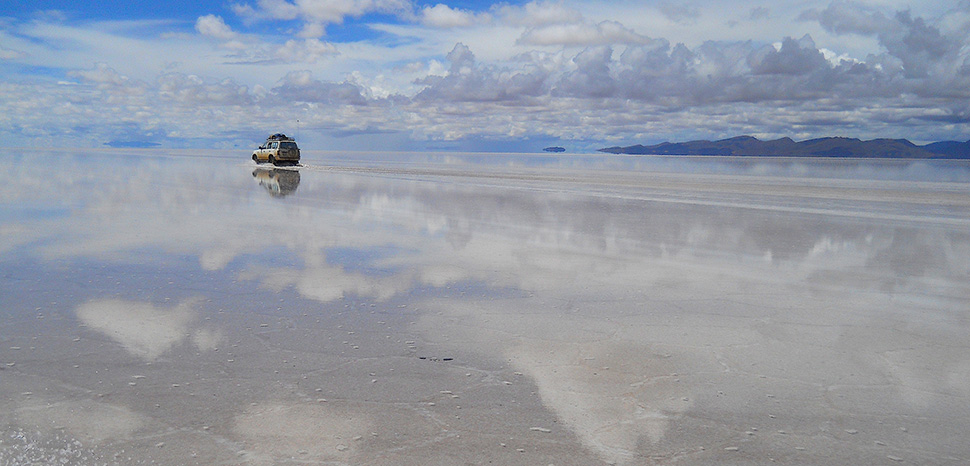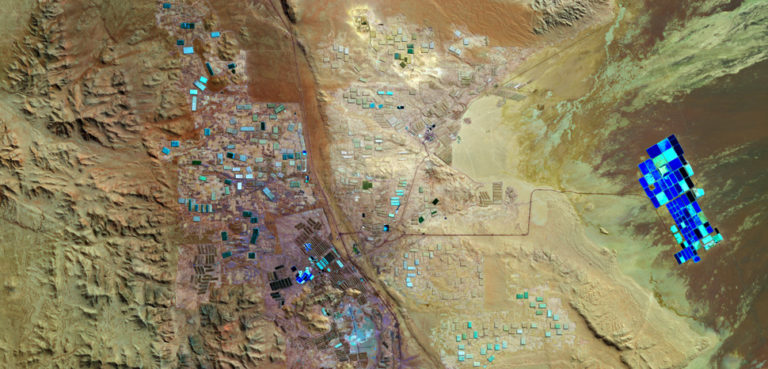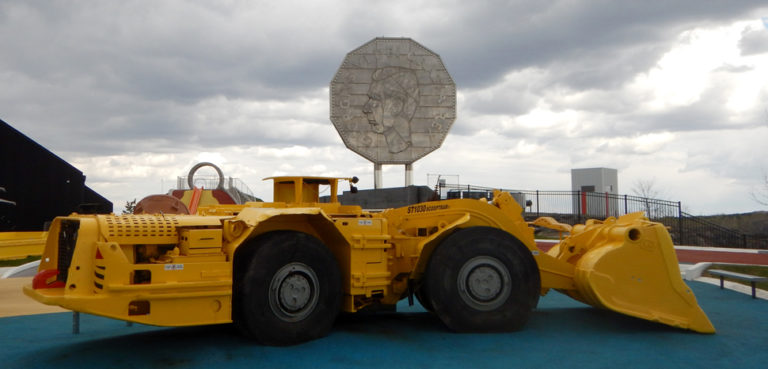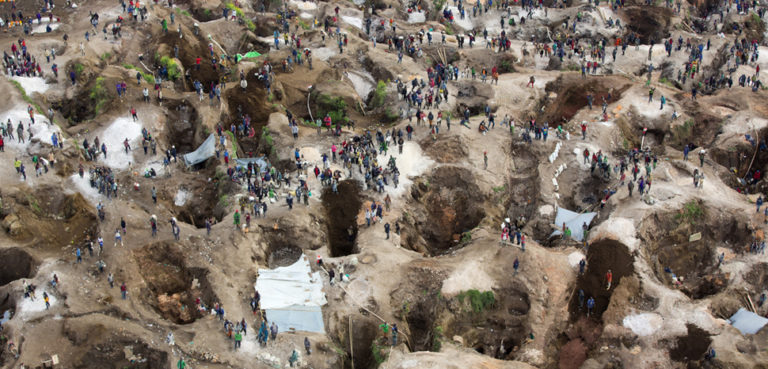Lithium is the next big mining boom given that the mineral can be utilized for lithium batteries which are currently, and for the foreseeable future, in high demand as the world craves green energy. South America has the world’s largest lithium deposits, among other critical and rare minerals, with Argentina, Bolivia, and Chile forming the so-called Lithium Triangle and neighboring Peru looking to export lithium and locally-made lithium batteries sometime this decade. (I have discussed lithium deposits in Argentina, Bolivia, and Peru in previous analyses for Geopolitical Monitor). One vital issue to remember though, lithium’s dirty little secret, is the water usage and water pollution involved in the extraction process.
The problem
Even lithium, which will be utilized for green technologies, is dirty to extract. Thus, parallel to announcements about new lithium mining projects, there are reports about the perils of this industry. Several academic papers and research articles have been written about the subject, focusing on Latin America. For example, a 2022 study published in Earth’s Future titled “Relic Groundwater and Prolonged Drought Confound Interpretations of Water Sustainability and Lithium Extraction in Arid Lands” addresses the issue. A 2021 article summarizes the common environmental side effects of lithium mining, namely water loss, ground destabilization, biodiversity loss, increased salinity of rivers, contaminated soil and toxic waste. The article also notes that “the adverse effects of lithium mining, especially the water loss, are impacting people too.” Case in point, an indigenous Aymara community lives and works around the Uyuni Salar in Bolivia and are beginning to suffer the consequences of lithium mining. “Many [Aymaras] grow quinoa, raise camelid livestock, and sell salt and flamingo eggs, traditional forms of income generation which, after hundreds of years, are now being compromised” because of large lithium projects.
Articles and reports must be written in Spanish about the perils and dangers of lithium mining vis-à-vis water issues to inform the local Latin American population. In a November 2022 interview for BBC, Ernesto Picco, a professor at Argentina’s Santiago del Estero National University (Universidad Nacional de Santiago del Estero: UNSE), summarized the lithium extractive process as follows:
“What the companies do is drill into the crust of the salt flats, pump the brine – which is groundwater – and pour it into pools which are [many] square kilometers in area. That is left to evaporate in the sun, and once it evaporates, a series of minerals and metals remain in the sediment, which is [later] processed in chemical plants. From there, lithium carbonate or another of its variants is extracted.”
A 2022 article summarizes a similar process:
“To extract lithium from rocks, as is the case particularly in Australia, the world’s largest producer, and in China, you first need to crush them. After that, water is added to form a paste, which is placed in a tank where the air separates the lithium from the rock. After filtration, the obtained lithium powder is further refined. To do this, [the powder] is heated to a temperature of up to 1,000 degrees. Chemicals and water are added before another filtration. The process takes between one and two months and is expensive due to its high energy consumption. In addition, using water and chemical products makes it not very respectful and friendly to the environment.”
It is worth noting that the water used for these processes is not for human consumption but is found in the flats themselves. However, as industrial practices use the local water until it dries up, mining companies must obtain water from neighboring bodies. Moreover, once the underground water from flats where lithium is found is removed, underground waterways may naturally bring in freshwater from other underground reservoirs meant for human or animal consumption.
Latin America, lithium, and water
In 2022, a collage of aerial photographs by German photographer Tom Hegen made regional news as they exposed lithium fields in the Lithium Triangle. The photos show dozens of pools of unnatural colors – a result of the mix of lithium chemicals and water used to extract the lithium – ranging from “pinkish white to turquoise, through highly concentrated canary yellow.” A report about Hegen’s work highlighted how the lithium mining in the Atacama desert, northern Chile, “consumes, contaminates and deviates the scarce water resources that local communities have.” The essay adds that lithium mining, including the evaporation fields, requires up to 21 million liters of water daily, and approximately 2.2 million liters of water are needed to produce one ton of lithium. Speaking about Chile in the article mentioned above for BBC, Professor Ernesto Picco stressed, “ecosystems continue to be sacrificed at the expense of the northern hemisphere in exchange for a few coins.”
Research about lithium and water issues across Latin American states is becoming more frequent. Bloomberg Linea has discussed how much lithium mining contaminates local environments. Quoting a seminar held at Mexico’s National Autonomous University (UNAM), the article explains how open-air mining will destroy local land, use chemicals and “millions of gallons of water,” which will have permanent effects on regional biodiversity and the well-being of local rural and indigenous communities. If lithium extraction occurs in Sonora state, the waters of the Yaqui River will be severely affected. Moreover, Mexican states like Chihuahua, Coahuila, Nuevo Leon, and Sonora experienced a medium-to-severe drought in 2022; a new drought in early 2023 in Sonora affected as much as 75.5% of the state. Hence, losing or polluting water from the Yaqui for an eventual lithium mining project will make future droughts even more devastating.
Chile is in a similar situation, as droughts and severe dry conditions (resulting in wildfires during the summer months) occur regularly. Elena Rivera Cardoso, president of the Indigenous Colla community of the Copiapó commune in northern Chile, has spoken about how “if the waterways in their Andean homelands continue to dry up, so too will their ancient culture and traditions. At the heart of the crisis is lithium mining.” The ecological impacts of lithium mining in Chile’s Atacama desert are also alarming since “around 80 percent of the salt flats’ animal species are native, and the region is critical for migratory birds,” explains a 2022 analysis for the Natural Resources Defense Council.
Similarly, several research and environmental organizations are publishing reports to raise awareness of the link between water, environmental protection (or destruction), and the lithium industry in Latin America. For example, Wetlands International published a 2022 report entitled “The impact of lithium mining on the High Andean Wetlands” (“El impacto de la minería de litio en los Humedales Altoandinos”).
With that said it would be wrong for this article to imply that concern about water and lithium commenced only in 2022 since most news reports and articles cited above are from that year. Back in 2018, when the lithium boom was beginning, lawyer Pía Marchegiani, a professor at the Faculty of Law of Buenos Aires University (UBA), gave a presentation in which she correctly argued that “in some salt flats, three or four projects are being planned in the same place, with different uses of water, without knowing how those ecosystems work.” She also stressed, “there is not enough basic information available to assess the impacts of the projects and, above all, of the combination that may result from them.” Five years after that presentation, concerns about water pollution and diminishing water supplies due to lithium mining have increased; however, for the time being, regional governments (at the federal or local level) have not seemingly considered this link, let alone begun to address it. (Marchegiani co-authored a 2019 report on the environmental and social consequences of lithium extraction in Argentina).
Future lithium projects will likely include a more robust discussion over water. A good case is the La Rioja province, Argentina, as lithium has been discovered by Brava Lake (Laguna Brava). Regional officials are keen to exploit the deposits arguing that the mineral will bring development and profit; moreover, officials have reportedly erroneously claimed that lithium extraction is not water intensive. Environmental groups have protested the project and false narratives and clarified how water-intensive the industry actually is.
In February 2023, Mexican Andrés Manuel López Obrador nationalized the country’s lithium reserves, expressly the Bacadéhuachi reserves (in Sonora), so international companies will not be the sole beneficiaries of Mexican lithium. However, even if a Mexican mining company eventually extracts Mexican lithium, water pollution will likely still occur if current water-intensive mining practices are followed.
Does lithium mining have to be water-intensive?
The one argument in favor of continuing to use the traditional extraction method for lithium is that it relies on the sun’s rays to dry up the lithium-water lakes. Sun power is free, which is an obvious benefit. Moreover, “the evaporation process allows raising the degree of lithium concentration in the brine, from around an initial 0.2% to 6%.”
Some more environmentally-conscious methods to extract lithium are being tested in Germany and the United Kingdom. “However, each of the new methods has its own complexities to solve, from the great use of fresh water in the plant to carry out the lithium separation to the generation of waste due to the use of solvents and the intensive use of electrical energy,” explains Javier Lewkowicz for Dialogo Chino.
Conclusions
During her 2018 remarks, Professor Marchegiani argued, “these processes [lithium mining projects] should respect the decisions of communities that do not wish to put their ways of life at risk and reject extraction in their territories.” Five years later, mining companies and regional officials are not generally considering the wishes, rights, and concerns of these communities, especially indigenous ones, that live close to lithium deposits. While there is evident support for lithium mining projects (new jobs and development are always welcome) among local populations, the loss of water resources, pollution, and the effects on human life and local ecosystems are too significant to ignore.
The implication here is not that lithium mining in Latin America should be fully suspended. Instead, comprehensive environmental analyses are required to fully understand the potential consequences of any lithium project, including the loss or pollution of precious water resources. If extracting lithium from a particular area is deemed to be too environmentally costly, including the loss or pollution of water, then the project should be halted. In 2023, humanity can no longer afford to waste one drop of water.
Wilder Alejandro Sánchez is president of Second Floor Strategies, a consulting firm in Washington, D.C. He is an analyst that monitors defense & security, geopolitical, and trade issues across the Western Hemisphere, Eastern Europe, and Central Asia.




